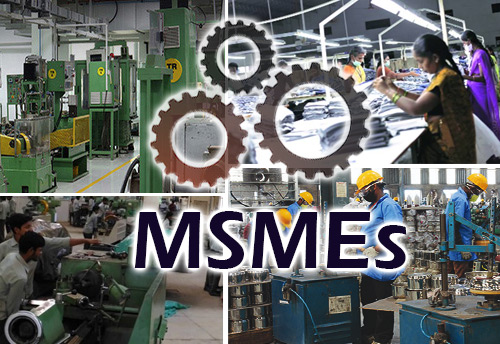 Data released by the finance ministry show that nearly a month after the package for MSMEs was announced, public sector banks disbursed Rs 14,690.84 crore till June 1 under the Rs three lakh crore Emergency Credit Line Guarantee Scheme (ECLGS) for the MSME sector.
Data released by the finance ministry show that nearly a month after the package for MSMEs was announced, public sector banks disbursed Rs 14,690.84 crore till June 1 under the Rs three lakh crore Emergency Credit Line Guarantee Scheme (ECLGS) for the MSME sector.
But as revenues crash and MSMEs struggle for survival, a Crisil analysis finds that lenders need a new credit assessment paradigm.
India, like the world, is reeling under the health and economic consequences of the pandemic Covid-19. The country’s small and medium businesses — the lifeblood of the Indian economy — contribute 29 percent of the country’s GDP and the sector that added the maximum number of jobs in the last few years is struggling for survival and gasping for liquidity to stay afloat.
While the sector was hopeful of cash payout by the government, the government’s package has focused on providing credit through banks and NBFCs to tide over one of the toughest times in India’s economic history since post-independence.
Several surveys present a grim picture for MSMEs as they contemplate shutting shop, scaling down operations, and lay-offs. An analysis by Crisil finds that the expected five percent contraction in the economy will significantly hurt the micro, small and medium enterprises across sectors. The pain would be aggravated as India Inc heads towards a 15 percent decline in revenue and a 25 percent fall in earnings before interest, taxes, depreciation, and amortization (EBITDA).
For the MSME sector, the fall in revenue will be steeper at 17-21 percent. A big percentage of the MSMEs make up the supply chains of big industries. A steep decline at the operating level will also impact the creditworthiness of the MSMEs, aggravating the liquidity stretch that MSMEs are battling with. The challenge would be the worst for micro-sized enterprises, which account for 32 percent of the overall MSME debt.
Previous downturns have shown that micro and small enterprises are unable to manage transient working capital challenges as effectively as large or medium-sized companies. And the hope is that measures announced in the form of emergency credit lines would nudge banks and financial institutions to lend more and help the sector tide over the crisis period.
It’s a catch-22 situation, as MSMEs find their balance sheets erode, putting a question mark on their creditworthiness and specific directions for credit disbursal nudging banks and NBFCs to do their due diligence before lending — it could translate into greater difficulty in accessing credit.
Finance minister Nirmala Sitharaman, meanwhile, has been meeting with public sector bankers — the private sector banks and NBFCs — to ensure that the Rs 3 lakh crore guaranteed as an emergency credit line for MSMEs gets channeled to the sector.
According to the latest data released by the finance ministry, public sector banks have disbursed Rs 14,690.84 crore till June 11, under the Rs 3-lakh crore Emergency Credit Line Guarantee Scheme (ECLGS) for the MSME sector. Public sector banks (PSBs) have sanctioned loans worth Rs 29,490.81 crore under the 100 percent ECLGS for the Micro, Small & Medium Enterprises (MSME) sector starting June 1.
The scheme is the biggest fiscal component of the Rs 20-lakh crore Atma Nirbhar Bharat Abhiyan package announced by Finance Minister Nirmala Sitharaman last month. Sitharaman was in a video-conference with private sector banks and NBFCs on June 15. MSMEs have been worried about access to credit and the fact that banks and NBFCs have been asked to do their due diligence before disbursing credit has only added to insecurities. With the demand outlook still weak, MSMEs find themselves vulnerable.
Amish Mehta, Chief Operating Officer, Crisil states in a research note that “hastening the implementation of the Rs 3 lakh crore Atma Nirbhar Bharat scheme is crucial to ensure liquidity to MSMEs continue and that lenders have to go beyond traditional credit processes because they have to play a seminal role in recovery”.This means that banks and NBFCs will need to closely understand the situation of MSMEs and use innovations such as digital platforms and alternative data for monitoring and underwriting.
Crisil predicts a sharp decline in revenue growth for MSMEs in real estate, engineering, procurement, and construction segments. It said revenues of such MSMEs could even halve with demand sliding. It may be noted that the sector is bogged by massive credit, demand, and supply mismatch. According to data, the overall demand for debt and equity finance by Indian MSMEs was Rs 87.7 lakh crore, of which debt demand was Rs 69.3 crore and formal sources could only cater to about Rs 10.9 lakh crore of the demand.




